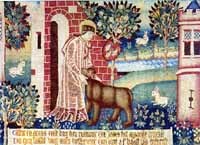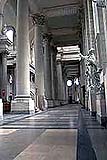Musée
des Beaux-Arts

Arras
Former monastic
building
Tapestries
Salle des
Mays:
see also
NEW
PAGE
Archaeology
19th century
paintings & local history
|
|
Origins in the French
Revolution Housed in a monastic
building When Napoleon reached an understanding with the Pope, the
new Abbey church became the town's cathedral. In 1832 the
town bought part of the buildings from the state for a
museum. |
|
|
|
|
Tapestries |
|
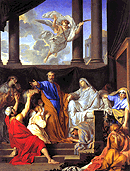 "Saint Peter Raising the Widow Tabitha" - the 1652 May, by Louis Testelin (1615-1665). |
Salle des Mays Artists' paintings had to be at least 11 feet high; to portray scenes of the apostles and saints in classical dress, in clear bold colours with no distracting background detail. By 1707 the custom had to be stopped because the cathedral had no more room. In the Revolution the Mays were dispersed. 14 went to
Arras Museum. Seven have now been restored and are displayed
in the biggest gallery, the "Salle
des Mays". |
 Stone tomb which was originally painted, dated 1446 - during the Hundred Years' War. It shows a half decomposed, worm-eaten figure, with a scroll coming out of his mouth, saying"By the mercy of God alone, I hope for my salvation". The Musée's archaeological displays show how much has been discovered about the Arras' earier history: the Roman town, nearby Roman villas, and Gallic settlements - as well as the town's prosperity in the Middle Ages. 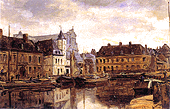 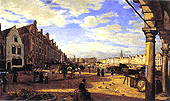 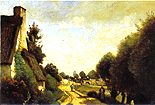 19th century artists wanted to capture the feeling of an old town that history had passed by - Arras was then a rural backwater, far from Paris with little industry. The Musée has an extensive 19th century collection, including the local "Arras School" of painters who worked in the area. 1. "The Old Bank in Arras" 1875 artist unknown - showing grain barges on the river. 2. "Grand'Place on Market Day" 1878 - Charles Desavary, Arras 3. "A road near Arras" - Camille Corot 1853-58 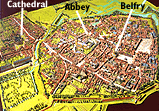 Model of Arras made in 1716 to help French military engineers plan stronger defences. Now restored, it's a record of the old town before the upheavals and destruction of later years. You can clearly see the two squares, the old medieval Abbey of St.Vaast, and the Cathedral which was demolished in the Revolution. |
|
|
Medieval Art Also... Regional Art Galleries - and Art MENU Flemish Art Vauban & 17th century fortications Retables - Baroque altar pieces |
|
|
|
|
|
|

